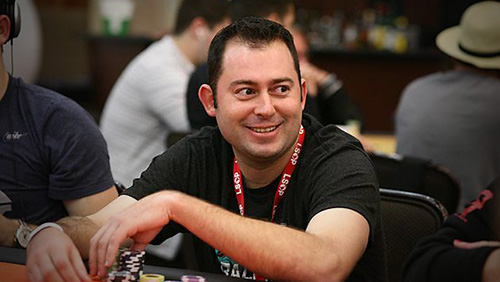Lee Davy takes a look at the first installment of the new book from the talented duo of Dusty Schmidt and Paul Hoppe and ponders whether it is worth a few big blinds?
 Dusty Schmidt and Paul Hoppe’s third offering has been a long time coming, but in fairness to the poker literary geniuses they do have the misfortunate of living on an island that rates online poker right up there with mass murder.
Dusty Schmidt and Paul Hoppe’s third offering has been a long time coming, but in fairness to the poker literary geniuses they do have the misfortunate of living on an island that rates online poker right up there with mass murder.
Pay Attention to Bet Sizing is the first part of a proposed eight part series that will form the crux of Poker in Practice Critical Concepts. The pair have decided to skip the conventional publishing route in favor of the en vogue process of serializing content and I think it creates value all round.
Not only do the lads get the opportunity to perhaps earn a few more bucks in sales, but they also get to learn from feedback posted along the way, and by serializing they effectively kill off any hopes that procrastination had of killing their muse.
And from the poker players perspective?
Well I just read the book cover-to-cover in the same time it took me to boil an egg, and that about says it all for a community who would prefer to smoke a phat one whilst listing to some Bob Marley.
But is it any good?
I think so.
It’s short, sweet and soaked in strategic analysis.
Anyone who has read The Way of the Poker Warrior knows that nobody breaks a hand down quite like Paul Hoppe. His attention to detail is almost anal, and the way he gels with Schmidt’s thought process is seamless.
The book starts by talking in general about bet sizing. The pages reminding us that the game is called ‘No Limit’ for a reason that most of us have seemingly forgotten.
“Players are often taught these days to have structure in a game that was created to have no structure.”
They touch on the automation of plays and the need for the weaker players to be able to take a course of action without thinking, before diving into 10 hand examples, from Dusty, that the pair dissect to peruse the finer details of the reasons behind why the very best players bet the sizes that they do.
The examples cover every standard bet sizing concept, and whilst it was unique to be reading hand analysis that focused its attention on one aspect of the game, you still learn so much more from the commentary given from the holistic view of the hand.
The book ends with a demand for feedback so please give it to them.
This is the way that books like this should be made. They should be as interactive as possible, so supply can be created to please demand.
I highly recommend purchasing a copy of Part 1 Pay Attention to Bet Sizing and also get on the list for the entire series because I think it’s going to be a very suitable addition to your poker library.